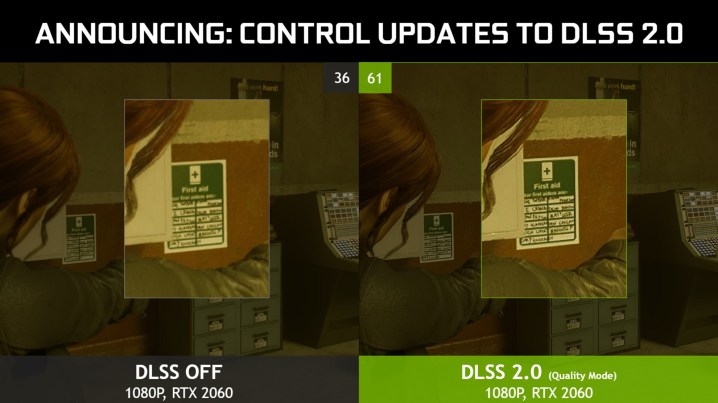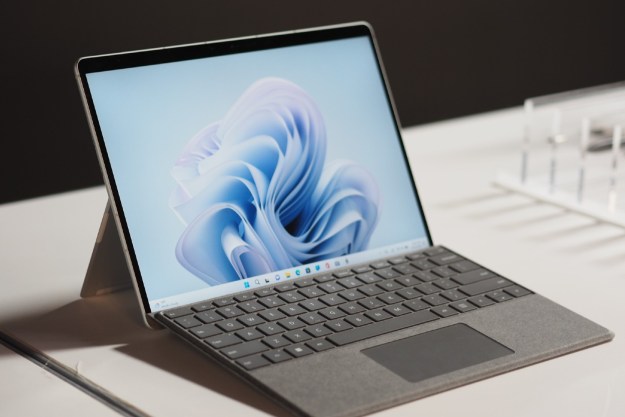Just last week, Nvidia and Microsoft announced new ray tracing features with the launch of DirectX 12 Ultimate. Now, Nvidia is following that up with a second iteration of its DLSS (deep learning super sampling) technology. Nvidia claims DLSS 2.0 will greatly improve game visuals and performance using its artificial intelligence-based approach to rendering.
The format was originally introduced with Nvidia’s Turing architecture, which debuted on the company’s GeForce RTX 2080 graphics. DLSS uses machine learning to analyze tens of thousands of reference images to help increase frame rates.
Unlike the olde, temporal anti-aliasing-based rendering approach, DLSS conserves system resources by examining a lower resolution scene and compares it to the reference images to determine how the scene should be rendered at a higher resolution. For Nvidia, it was a way of compensating for the heavy toll that ray tracing took on performance.
With DLSS 2.0, Nvidia aims to close the performance gap further. Even on midrange GPUs like the RTX 2060, Nvidia claims you should see a boost in frame rates, visual fidelity, and scene details.

Nvidia executives showcased the power of DLSS in a number of demos prior to the feature’s announcement, comparing the performance with DLSS 2.0 enabled at 1440p resolution against a game without the feature turned on. The result was delightfully impressive.
In Mechwarrior 5, with DLSS disabled at 1440p resolution on the RTX 2060, the game played at a respectable 71 frames per second. With DLSS 1.0 enabled, performance jumped to 95 FPS, and you’re getting more visual details, better colors, and more realism — it’s like HDR for your game.
In the demo, the colors in the landscape were punchier, and the scene appears sharper, though text appears slightly blurry, a likely result of oversharpening. With DLSS 2.0 enabled, the scene benefits from the same enhanced details as DLSS 1.0, but here text appears to be crisper. Nvidia was able to achieve a similarly high 95 FPS with the new update, showing that you’re not trading off game performance for visual fidelity.

Control DLC will get updated to DLSS 2.0, and in that game, Nvidia showed that even peripheral background text in the game’s scene also gets sharpened, making text and details easier to read and see. When the game is played at 1080p resolution, you’re getting almost a 70 percent boost in frame rates with DLSS 2.0 enabled.
Whereas a game at 1080p played at just 36 FPS without DLSS, the same game jumps to 61 FPS with DLSS 2.0 while also providing upgraded visual fidelity, showing more details.
For fast, action-packed games, DLSS 2.0 will also improve the image quality of objects in motion, so you’re going to see crisper movements throughout the game. DLSS 2.0 is available now, Nvidia said, on titles such as Wolfenstein: Youngblood, Deliver Us the Moon, Mecharrior 5, and Unreal Engine, with dozens more titles coming soon.
Editors' Recommendations
- New Nvidia update suggests DLSS 4.0 is closer than we thought
- Nvidia’s DLSS 3.5 update flips ray tracing on its head
- You can now moonwalk on the moon with Nvidia’s A.I. and ray tracing tech
- AMD has an answer to Nvidia’s DLSS, but not ray tracing



